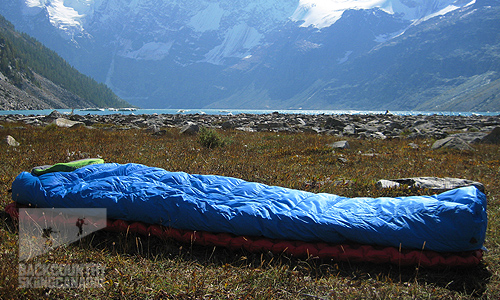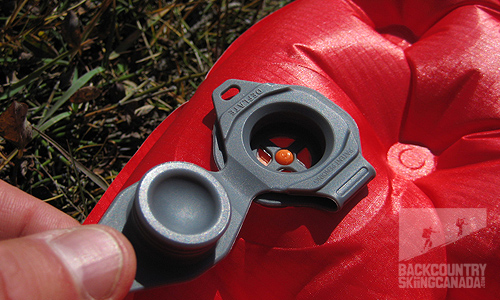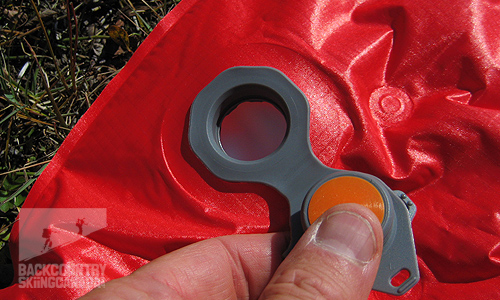


SITE LOGIN
- REVIEWS
- NEWS
- STORE
- ROUTES
- LODGING
-
VIDEOS
- 2022/23 Gear Reviews
- 2021/22 Gear Reviews
- 2020/21 Gear Reviews
- 2019/20 Gear Reviews
- 2018/19 Gear Reviews
- 2017/18 Gear Reviews
- 2016/17 Gear Reviews
- 2015/16 Gear Reviews
- 2014/15 Gear Reviews
- 2013/14 Gear Reviews
- 2012/13 Gear Reviews
- 2011/12 Gear Reviews
- 2020 Outdoor Retailer
- 2019 Outdoor Retailer
- 2018 Outdoor Retailer
- 2017 Outdoor Presscamp
- 2017 Outdoor Retailer
- 2016 Outdoor Presscamp
- 2016 Outdoor Retailer
- 2015 SIA Show
- 2014 Outdoor Retailer
- 2013 SIA Show
- 2012 Outdoor Retailer
- Tips and Tricks
- Backcountry Skiing
- SAFETY
- ABOUT
- REVIEWS
- NEWS
- STORE
- ROUTES
- LODGING
-
VIDEOS
- 2022/23 Gear Reviews
- 2021/22 Gear Reviews
- 2020/21 Gear Reviews
- 2019/20 Gear Reviews
- 2018/19 Gear Reviews
- 2017/18 Gear Reviews
- 2016/17 Gear Reviews
- 2015/16 Gear Reviews
- 2014/15 Gear Reviews
- 2013/14 Gear Reviews
- 2012/13 Gear Reviews
- 2011/12 Gear Reviews
- 2020 Outdoor Retailer
- 2019 Outdoor Retailer
- 2018 Outdoor Retailer
- 2017 Outdoor Presscamp
- 2017 Outdoor Retailer
- 2016 Outdoor Presscamp
- 2016 Outdoor Retailer
- 2015 SIA Show
- 2014 Outdoor Retailer
- 2013 SIA Show
- 2012 Outdoor Retailer
- Tips and Tricks
- Backcountry Skiing
- SAFETY
- ABOUT
TOP VIDEOS
Sea To Summit Comfort Plus Insulated Mat
The new Sea to Summit Comfort Plus Insulated Mat marks a paradigm shift in what one expects from a sleeping mat. It’s not only far more comfortable due to its design, it’s also far more efficient to use thanks to a long list of features. Let’s look at comfort first, shall we?
Since the Comfort Plus Insulated Mat uses a dual layer construction, it provides an effective way of fine tuning the level of comfort you desire by varying the air pressure in each of two air chambers. The bottom layer can be inflated more to accommodate uneven ground obstructions, and the top can be inflated less for increased comfort and contact with your body. These separate air chambers also ensure that in the case of a puncture the mat will still function for the rest for the trip on a single chamber. Sea to Summit’s secret sauce for comfort however, is their Air Sprung Cells. The Sea to Summit Comfort Plus Insulated Mat has 696 cells which act like a pocket-spring mattress. Each cell conforms to your body position depending upon the pressure you place on them, to provide a softer, more comfortable feel. The Air Sprung Cells are also off-set on each side of the mat providing uniform insulation and cushioning.
On the feature side of things, the Sea to Summit Comfort Plus Insulated Mat has a built in multifunction valve for easy inflation and super quick deflation. The 40-denier nylon-ripstop face fabric keep things not only light but also super durable, which is important for any sleeping mat. The use of Exkin Platinum thermal technology on the exterior of the mat reflects your body heat back to you, while Thermolite insulation inside the mat prevents heat loss and provides an R value of 5 (quite respectable for a mat of this thickness: 6.3 cm). An antimicrobial treatment is added to the interior of the Thermoplastic Polyurethane (TPU) to ensure that moist air inside the mat does not proliferate the growth of mould.
- SHOW THE REST OF THE REVIEW / PHOTOS / VIDEO
-
Sea to Summit has two categories of mats, insulated and non-insulated. From here they break out into their Ultra-Light Mats, Comfort Light Mats and Comfort Plus Mats. The main difference between the insulated and non-insulated versions is of course the R Value they provide. The non-insulated mats are best used in summer and shoulder seasons only, as their R-Value ranges from 0.7 to 2.5 (depending on which version you choose). The Insulated mats, while heavier, provide an R-value from 3.3 to 5, with 5 being the warmest mat they produce. These mats can be used any time of the year and are ideal for winter camping. The Ultra-Light Mats are obviously the lightest mats in the lineup with the thinnest profile and fewest AirSprung cells, limiting its comfort in comparison to the other mats. The Comfort Light Mats are thicker and use a combination of strategically placed large and small AirSprung Cells. The Comfort Plus Mats use only the smaller AirSprung Cells (and more of them) to provide the most comfort (but also the most weight) of any of the mats in Sea to Summit’s lineup. The specific mat you choose will be dictated by your needs. You may need a higher R-value for colder nights, or a lighter mat for backcountry trips. What the Sea to Summit Comfort Plus Insulated Mat sacrifices in compact size and minimal weight it makes up for in seasonal versatility.
Here's the Sea to Summit Comfort Plus Insulated Mat in its element.
In addition to the mat, this photo shows the Sea To Summit Talus TS3 Sleeping Bag (which we reviewed here) and the Sea to Summit Aeros Pillow Premium. This is a light weight, compact inflatable pillow that comes in two sizes and is a must have for any backcountry traveler. This is truly the ultimate backcountry combo!
Features:
- The liquid-extruded thermoplastic urethane bonds permanently to shell fabric, virtually eliminating delamination.
- An antimicrobial treatment is added to the TPU to prevent issues caused by warm, moist air trapped inside the mat.
- Patent-pending multifunction valve for fast and easy inflation, deflation and fine-tuning of air pressure.
- Exkin Platinum fabric and Thermolite insulation are combined to prevent radiant and convective heat loss.
- Available in tapered and rectangular shapes.
- Dual layer design ensures a level of built-in redundancy; if you do end up with a puncture in one layer of the mattress the other layer remains fully functional.
- 40D rip-stop nylon face fabric offers the right balance between weight and durability.
- Comes with a quality stuff sack, a repair kit containing six self-adhesive patches for repairing punctures in the field, and a spare silicone one-way valve flap.Here's the secret sauce that makes the Sea to Summit Comfort Plus Insulated Mat so dam comfortable, these little AirSprung Cells. Love 'em.
Below is a photo of the innovative multifunction valve in the closed position.
Please double click to enter your content here.
Open the top flap and you're ready to inflate.Open the second flap on the same valve and the mat instantly deflates, no need for a two way valve... brilliant!
You'll want to use the handy-dandy Sea to Summit Air Stream Dry Sack Pump (sold separately) for inflating the mat, it not only saves time and makes easy work of things but then you have a dry sac to pack your clothes in.
Verdict:
A good night’s sleep in the backcountry is crucial for being able to achieve your objectives the next day, be they large or small. As I get older I find that I don’t sleep as well on backcountry trips as I used to. Being 6’1” and 175lb I also find that I need a larger mat with additional thickness in order to be comfortable. Having spent 30+ years camping in all seasons of the year, I really want one mat that will do it all. I started out not using a sleeping mat and sleeping directly on the ground in order to save weight and keep things simple. In the mid 80’s my resolve broke down and I purchased a 3/4 length Thermarest which I found to be a quantum leap in comfort. That is until I got hooked for the next ten years on the ultra-thick and lush Exped Mats. I’ve owned a few of their mats over the years, the last being the Exped Downmat UL 7 LW which is a down insulated mat with an R value of 5.9 and a thickness of 7cm. It’s still one of the lightest mats on the market, weighing only 750g. The reason I’m telling you this is that I really thought things couldn’t get any better. But after seeing the new Sea to Summit sleeping mat range for the first time at the 2014 Summer Outdoor Retailer Show, my concept of comfort changed forever.
The Air Sprung Cells used in all of the Sea to Summit Mats feel like a mini back massage when you lay on them. These cells conform much better to your body than traditional tube style mats, like those from Exped. I’ve also learned that the thickness of a mat doesn’t necessarily dictate its comfort level. The Sea to Summit Comfort Plus Insulated Mat is 0.7cm thinner than my previous Downmat UL7, but exponentially more comfortable. While there are plenty of features that make the Sea to Summit Mats more technically advanced than others on the market, the one that really makes me smile is the intuitive dual valve design. One of my pet peeves is a mat with a built in 2-way valve that takes just as long (if not longer) to deflate as it does to inflate. All of the Summit Comfort Mats have a two-in-one valve: lift one flap to inflate and another to deflate. Super ingenious!
Each of the Sea to Summit Mats are 55cm wide, an ideal width for most people, especially those with broad shoulders. Narrower mats leave your arms resting on the ground all night where they get cold and uncomfortable. There are also two versions of each Sea to Summit mat available: tapered and rectangular. The rectangular matt provides more surface area for car campers and ‘glampers’ (when weight and bulk are not important) but backcountry users should go with the tapered design every time. The 40D rip-stop nylon face fabric used on the mats is not the lightest I’ve tested but it’s a good compromise between weight and durability. I’m happy to have a more durable mat as it instills confidence for use on rougher ground and longer trips
One item you may also want to purchase with any Sea to Summit mat is the Air Stream Dry Sack Pump. This is a 20L Ultra-Sil Nano Dry Sack that affixes to the mat for quick and easy inflation. It also keeps moisture from your mouth out of your mat and eliminates any condensation build up inside the mat (which can degrade the laminates over time). Each side of the mat take about two to three full inflations with the Air Stream Dry Sack Pump, depending on your desired air pressure and comfort level.
Over all, the Sea to Summit Comfort Plus Insulated Mat is the most functional and comfortable mat I have ever used and always makes my tent mates envious. Over the past few months I have spent at least 30+ nights sleeping on the Comfort Plus Insulated Mat from cold, early winter camping trips to light and fast summer hiking trips. The Sea to Summit Comfort Plus Insulated Mat has always provided a solid night’s sleep.
If you are interested in a lighter sleeping mat that packs down much small (but doesn't insulate as much) then give our review of the Sea To Summit UltraLight Mat a read here.
It compacts down pretty small given its comfort level and insulating R value.
 |
PROS:
|
 |
CONS:
|
SPECS:
Price: $239.95 CAN (large)
Thickness: 6.3cm / 2.5in
Length: 184cm / 72in
Width: 55cm / 21.5in
Packed size: 12x23cm / 5x9in
Weight: 890g / 31.4oz (size large)
R value: 5
Number of Air Sprung Cells: 696
Colour: Red
Awards: Backpacker magazine's 2015 Editors' Choice Award
RATING: 9/10
Warmth 2/2
Packed size 1.5/2
Ease of use 2/2
Weight 1.5/2
Quality / Price 2/2
Did we miss something? Are we totally out to lunch? Let us know what you think. People like/dislike gear for different reasons so chime in below and we'll get a well-rounded evaluation.
Leave a Comment:
Copyright © 2009-25 Backcountry Skiing Canada. All Rights Reserved.

















